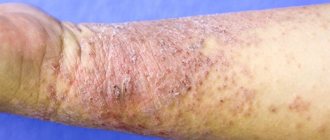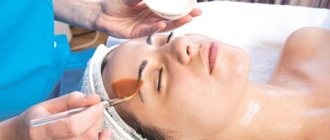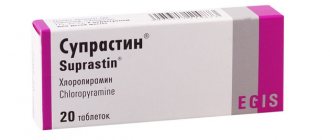Why does irritation occur in the anus?
Itching in the anus brings a lot of unpleasant sensations. A burning sensation around the anus can be caused by the following pathologies:
- Dysbacteriosis. If the microflora is disturbed, the patient develops digestive disorders. This irritates the skin around the anus.
- Helminths. Itching in the anus due to helminthic infestation. In this case, itching appears after defecation. Giardia causes a rash, diarrhea, and inflammation of the skin around the anus. Redness and irritation occurs after pinworms lay eggs.
- Diseases of the rectum. Itching is caused by condylomas or hemorrhoids. With polyps, anorectal fistula or fissure, pain and bleeding occur.
- Lack of hygiene. A burning sensation in the anus is caused by the absence of a shower for several days, cheap toilet paper, insufficient care, and tight underwear.
- Diabetes mellitus and other diseases of internal organs. Severe itching is sometimes caused by gastritis, lack of vitamins, gout, hepatitis, diseases of the pancreas and liver.
- Diseases of the genitourinary area. The anal skin itches due to genitourinary infections, gynecological pathologies, prostatitis or urethritis.
- Skin diseases. Accompanies psoriasis, dermatitis, lichen ruber, eczema.
- Allergy. Most often food, less often - for medicines or alcoholic beverages or hygiene products.
- Obesity. The anus itches due to diaper rash and increased sweating.
- Obsessive neurosis. Due to anxiety and depression, the immune system is suppressed, the skin becomes thin, bakes and becomes irritated at the slightest touch. The obsessive desire for sterility forces you to wash out the anus, drying out the mucous membrane.
Depending on the reason for the appearance of such a reaction of the body, there are several types of dermatitis:
- allergic perianal dermatitis occurs as a result of contact with an irritant and is accompanied by itching and the appearance of watery pimples;
- the fungal appearance is accompanied by white flaky skin, a small blistering rash;
- the bacterial appearance, in addition to itching, discoloration and pain of the skin, is also accompanied by pustular visors in the anus;
- Jeep's disease is considered the most dangerous manifestation of perianal dermatitis, since at this stage the pustular pimples burst, forming non-healing ulcers, fistulas (channels that connect the inflamed lesions with any cavity) can form, their elimination is possible only through surgical intervention.
Quite rare, but elevated temperature with perianal dermatitis can still occur. If with other types of allergic reactions this is a bad sign, then with perianal allergies it indicates that the body is struggling with the irritant.
But the patient must immediately inform the attending physician about a new symptom in order to avoid blood poisoning.
Disease prevention
Preventing the development of the disease is quite simple; for this you need:
- Treat diseases of the gastrointestinal tract in a timely manner.
- Normalize your lifestyle and diet.
- Wear comfortable underwear made from natural fabrics.
- Observe hygiene rules.
- Strengthen and maintain immunity.
- Avoid contact with allergens if you are prone to an allergic reaction.
Perianal dermatitis is an inflammatory disease that affects the skin in the anus. Pathology occurs as a result of numerous unfavorable factors and has a specific clinical picture.
Having noticed signs of the disease, it is necessary to contact a specialist as soon as possible, who will make a diagnosis and prescribe competent comprehensive treatment. If there is no therapy, serious complications that are dangerous to the patient’s health may develop.
What is anal itching?
Anal itching is a condition characterized by irritation in the anal area. For women, the area where pathology spreads can involve the external genitalia. According to statistics, the disease manifests itself in women and men of mature age, and it is most popular among the stronger sex. This condition in itself is not dangerous. But it causes discomfort and can also be a sign of some serious diseases.
Symptoms
General symptoms of the disease:
- hyperemia and severe itching in the perianal area;
- with a long, chronic course, dermatitis is detected on the buttocks when the skin lesion extends beyond the perianal zone;
- if dermatitis is caused by hemorrhoids, then the symptoms are supplemented by pain and a feeling of discomfort;
- weeping, bleeding erosions, which over time become covered with brownish crusts;
- In young children, there may be a deterioration in general health, low-grade fever, and stool disorders.
In adults
Anal dermatitis in adults is often almost asymptomatic, blurred, only sometimes worsening.
As a result of a protracted inflammatory process, small abscesses of a recurrent nature are formed. Usually, they open spontaneously or resolve. But the main thing is that a mixed form of dermatitis occurs when inflammation leads to the addition of both bacterial and fungal infections.
You can record the following things at the same time:
- a whitish coating is visually observed around the hole - a qualitative sign of a fungus, for example, the genus Candida;
- the area around the anus becomes covered with blisters filled with pus - a qualitative sign of a bacterial infection, for example, Staphylococcus aureus;
- inflammation of vesicles and pustules leads to their easy resolution, as a rule, during the act of defecation;
- because of this, the patient feels difficulty going to the toilet, even if there are no hemorrhoids or anal fissures.
- A small amount of blood mixed with mucus and pus is found on toilet paper and linen.
An indirect sign can be called a change in psychological state. The patient becomes nervous due to a constant feeling of discomfort.
In children
Dermatitis on the baby’s bottom manifests itself primarily in redness and swelling.
If we are talking about an infant, then an earlier sign will be frequent crying and restlessness of the child.
This dermatitis is characterized by weeping to a greater extent, because Children's skin is more delicate and not as oily as that of adults.
In the affected area, ulcers form, all turning into a crust-like coating. Due to the higher level of sensitization of the child’s body, perianal dermatitis leads to:
- disorders of intestinal motility;
- temperature up to 38 degrees;
- spread of skin inflammation beyond the anal area.
Rash due to hormonal imbalance in women
Hormonal imbalance is dangerous for a woman’s health. Reproductive function, metabolism, hair, nails, and skin suffer from improper hormone production. Active acne that is difficult to treat is a clear sign of hormonal imbalance.
Hormonal rash in a woman manifests itself in the form of acne and pimples, characteristic of adolescence. The formation of acne is promoted by clogging of the sebaceous glands with dead epithelium. Moreover, in case of hormonal imbalance, sebum is produced more actively. This provokes the appearance of new acne. The clogged ducts begin to fester. Often, ulcers are accompanied by a secondary infection, which further complicates treatment.
Hormonal acne occurs throughout a woman's body. But more often acne is observed on the face, back, and back of the head. Sometimes acne appears in the pubic area in women. This happens due to blockage of the pubic hair follicles. Hormonal rash spreading to the intimate area requires a comprehensive diagnosis. Unlike adolescence, hormonal acne in an adult woman does not go away on its own. It is necessary to start treatment.
Perianal dermatitis: why patients consider the disease indecent
Perianal dermatitis is one of those diseases that many patients try to keep silent about, considering their problems to be inconvenient and indecent. And only when it becomes completely unbearable from pain or discomfort, they go to a proctologist, who explains to the patient that dermatological treatment cannot be avoided. Inflammation of the anal area can appear for various reasons - both due to internal diseases and due to poor hygiene or exposure to pathogens.
Therefore, it is important for a dermatologist to determine the cause of the development of perianal dermatitis and, if necessary, prescribe additional studies from doctors of related specialties
Perianal dermatitis is an inflammation of the anal area, when the skin around the anus becomes red and inflamed, becomes swollen and painful, and causes severe itching. The cause of the development of perianal dermatitis can be allergies and intestinal diseases, hemorrhoids and anal fissures, candidiasis and helminthic infestations. Skin irritation and inflammation of the anal area can occur due to diarrhea and even poor personal hygiene. People of any gender and age are susceptible to the disease - from infants to old people, but the reasons that provoke perianal dermatitis are different for everyone
It is very important to establish what caused the inflammation of the anal area, and after starting treatment of the underlying disease, prescribe therapy for perianal dermatitis
How to determine the cause?
With a characteristic appearance, additionally taking a culture from the inflamed skin helps. This method helps to identify the microbe that caused dermatitis, as well as to clarify its sensitivity to antibiotics.
A rapid antigen test is available to confirm group A streptococcus .
You may have already seen how pediatricians and otolaryngologists use it to urgently resolve the issue of prescribing an antibiotic for acute inflammation in the throat.
Formally, the test according to the instructions is only for the throat, but many people are already actively using it for PID. For group A streptococcus, the sensitivity of the method is 77.9-98.0%, but remember that sometimes other microbes also cause PID.
Methods for treating dermatitis
For a successful recovery, it is necessary to make a correct diagnosis, which can only be done by a specialist.
This is especially important for infants, as they become restless, sleep and eat poorly. Self-administration of medications is not recommended.
Therapy for children
Before treating perianal dermatitis in a child, you should consult all possible specialists. To relieve symptoms, ointments that relieve itching are prescribed. As a rule, these are preparations for external use:
- Drapolene.
- Bepanten.
- Clotrimoxazole.
If the baby is diagnosed with other diseases, for example, dysbiosis and enterobiasis, prevention of helminthiasis will be required. One of the most effective drugs is Pirantel. Additionally, it is recommended to give your baby plenty of fluids. Treatment must be accompanied by careful hygiene of the anal area. For children, it is advisable to choose underwear made from natural fabrics, choose high-quality diapers and wash the anus after bowel movements. For allergic dermatitis, it is necessary to take antihistamines - Diazolin, Tavegil, etc. Perianal dermatitis can also be cured using folk remedies. Among the most common recipes are:
- Sea buckthorn oil - wash and dry the berries, pass through a juicer, strain and leave for a day. Then collect the liquid oil base and treat the affected areas with it.
- Decoction for bathing - mix black tea, chamomile, oak bark, brew St. John's wort and leave for an hour. Add the finished product to the bath when bathing.
Therapy for adults
Treatment of perianal dermatitis in adults involves external treatment of the inflamed areas, as well as the use of medications. For rapid healing of wounds, antiseptic preparations containing zinc, for example, Dexpanthenol, are used. The patient must be prescribed antibacterial drugs:
- Aurobin – eliminates pain, reduces swelling, promotes rapid skin restoration.
- Mycoseptin – has antifungal properties.
- Triderm – relieves inflammation and itching.
- Zinc ointment – has an anti-inflammatory and softening effect.
If the cause of dermatitis is enterobiasis, the doctor prescribes anthelmintics:
- Vermox;
- Pyrantel;
- Wormil;
- Medamin;
- Piperazine.
Antihistamines help relieve swelling and itching in the anal area. If the symptoms of the disease cannot be relieved with local remedies, the patient may be prescribed antibacterial therapy. At home you can use folk remedies:
- oak bark or chamomile - brew, infuse and add to the bath when bathing;
- propolis – grind, mix with vegetable oil and lubricate the inflamed area;
- pumpkin pulp – has excellent anti-inflammatory properties, apply up to four to five times a day;
- candles cut from raw potatoes - recommended if there are cracks.
Patients with weakened immune systems are advised to take a course of vitamin therapy.
How to treat?
Perianal infectious dermatitis almost never goes away on its own.
Only antibiotics can help.
The issue of treatment with topical skin antibiotics is discussed, but the generally accepted method in the world is now a course of antibiotics by mouth .
Penicillin or amoxicillin is usually prescribed for 10-14 days, sometimes in combination with local antibiotics (mupirocin, fusidine).
If it is not possible to destroy the infection the first time (this happens rarely), then they are treated with protected amoxicillin (with clavulanic acid), cephalosporins, and clarithromycin.
It is necessary to take into account the possibility of relapse if other family members are carriers of the infection. If the cultures are positive, they also undergo sanitation (removal of the infection).
Many thanks to colleagues from the Pediatrics group on Facebook for the links.
10, total, today
Types of irritation near the anus
In principle, different forms of perianal dermatitis are distinguished depending on the causes and specific symptoms of such a disease. Doctors diagnose the following types of illness:
- Allergic.
- Fungal.
- Bacterial.
- Jeep's disease.
It is quite difficult to determine on your own what type of dermatitis you are experiencing. It is best to entrust the diagnosis to an experienced specialist.
Allergic form
Signs of allergic perianal dermatitis may appear soon after contact with the allergen. In this case, the disease can make itself felt:
- Visually noticeable redness.
- The appearance of pimples and blisters on the skin. They contain a translucent liquid. Pimples can burst, forming painful erosions.
- Severe itching and discomfort.
- Reduction of negative symptoms after taking antihistamines.
If you exclude further contact with the allergen, the negative signs of the disease will pass quite quickly. But with repeated contacts, the allergy may manifest itself more clearly.
Eczema near the anus
Eczema is considered a common dermatological disease and, according to many doctors, is of an allergic nature, although many specialists find it difficult to accurately determine the causes of the development of such a disease. In particular, there are suggestions that the disease may develop against the background of disruptions in the nervous system and due to increased sweating. Damage to the perianal area can be:
- Spicy. In this case, the disease progresses very quickly, accompanied by redness of the skin, wetness of the skin folds and severe itching. Scratch marks appear on the skin, and the perianal folds become hypertrophied. Over time, erosions, crusts and weeping may occur. Patients often complain of a deterioration in their general condition and the appearance of signs of intoxication.
- Chronic. In this situation, the disease progresses gradually, the skin becomes dry and thin. The main signs of chronic eczema are constant irritation and obsessive itching. Areas of skin depigmentation may appear.
Fungal form
Dermatitis in the perianal area may well be fungal in nature. This disease most often occurs as a result of a severe decrease in immunity, which is complemented by dysbacteriosis and microtraumas of the skin. You can suspect the presence of a fungus by:
- The appearance of unbearable itching.
- Nagging pain in the rectal area.
- Painful sensations during bowel movements.
- Redness of the anus area. The skin becomes loose.
- The appearance of weeping areas and a whitish coating. A cheesy white coating is characteristic of candidiasis dermatitis.
- Peeling of the skin in affected areas.
Only a doctor can make an accurate diagnosis based on the studies performed. Visually determining the exact nature of the disease and, moreover, the type of fungi that caused it is simply unrealistic.
Bacterial form
The development of the bacterial form of perianal dermatitis is most often associated with the activity of staphylococci or streptococci. The infection may manifest itself:
- Vivid redness.
- The formation of blisters filled with purulent contents (yellow-green color is typical). The blisters burst over time, forming dark, painful crusts.
- Itching and soreness.
In the absence of timely treatment, the infection can spread, including to the subcutaneous fat. Adequate therapy allows you to quickly cope with the disease without causing complications.
Ulcers due to Jeep's disease
Jeep disease is considered to be the most severe form of perianal dermatitis. This illness makes itself felt:
- Redness, swelling and pain.
- Blistering rashes at the affected area.
- The appearance of deep painful ulcers in place of the blisters.
- Small recurrent abscesses.
- Stool disorders, in particular constipation and diarrhea (such signs are recorded in patients with intestinal ailments; they can also be supplemented by painful sensations in the abdomen and atypical discharge from the anus).
In the absence of timely seeking medical help, the disease causes serious complications, including boils and fistula tracts.
Tactics for treating dermatitis in children
Before starting treatment for a child, consultation with all specialists, especially a proctologist and dermatologist, is necessary, since only a highly qualified specialist can establish an accurate diagnosis.
The perianal form of dermatitis negatively affects the emotional state of the child. He loses his appetite, sleep is disturbed, there may be restlessness and agitation, and in some cases even delayed physical development.
First of all, various antipruritic ointments are prescribed to relieve acute symptoms, but it should be remembered that perianal dermatitis should be treated taking into account the individual characteristics of the baby. As a rule, external medications are prescribed that have an antipruritic and anti-inflammatory effect. These include:
- Bepanten;
- Drapolene;
- Clotrimoxazole, etc.
If a small patient has concomitant diseases such as dysbiosis and enterobiasis, it is necessary to prevent helminthiasis. For this, it is recommended to use Pyrantel, which is the most effective among the group of these drugs. In addition, it is recommended to drink plenty of fluids and especially pomegranate and carrot juices.
Any method of treating children requires mandatory hygienic care of the anal area. It is recommended to wear underwear made from natural fabrics, use hypoallergenic diapers and wash the anal area several times a day.
For the allergic form of dermatitis, it is recommended to take antihistamines (Diazolin, Tavegil, etc.). Further treatment depends on the nature of the disease.
Perianal dermatitis can be effectively treated with traditional medicine (decoctions, lotions, creams, medicinal baths, oils, etc.).
The most common traditional medicine recipes are:
SEA BUCKTHORN OIL. It is necessary to wash and dry the sea buckthorn berries and pass them through a juicer. The resulting juice is filtered and poured into an opaque container, which is infused for 24 hours. After this, it is necessary to collect a liquid oil base from the surface of the solution, which should be used to treat the areas affected by dermatitis.
BROTH FOR BATHING. It is recommended to take equal quantities of black tea, St. John's wort, chamomile flowers, oak bark and pour 4 tablespoons of the herbal mixture into 1 liter. hot water. The solution is infused for 1 hour, after which it is added to the bath when bathing.
It is important to consider that herbal solutions are used only in the absence of purulent skin lesions
It must be remembered that, despite the fact that treatment with traditional recipes is practically safe, nevertheless, consultation with your doctor is required. Only he can adequately assess the severity of the development of symptoms, especially in a child.
Why does the anus turn red with hemorrhoids?
Many people have absolutely no information about the causes and consequences of this unpleasant disease, associating it with pain during bowel movements and spotting. In fact, hemorrhoids can develop for many months without obvious symptoms. A person lives without pain, only sometimes experiencing mild discomfort after bowel movements. If the anus is red, they begin to look for the problem in poor diet or hygienic cosmetics, wasting precious time for healing.
Redness of the perianal zone appears in the following cases:
- the hemorrhoidal node has become greatly enlarged and attracts excess fluid, causing swelling of the rectal passage;
- microcracks in the intestinal mucosa became infected and inflammation began;
- An abscess or fistula has developed inside the lower part of the rectum.
A change in skin tone in the perineum during exacerbation of hemorrhoids always requires urgent help and treatment. Moreover, if it is accompanied by such serious symptoms as:
- itching, which intensifies with nervousness or after straining;
- pain during bowel movements;
- heaviness resembling constipation;
- discharge of blood clots and white thick mucus on the walls of the toilet or underwear;
- painful sphincter spasms.
Proctologists do not recommend delaying treatment if the anus is red and it hurts for a person to sit. This may “speak” of the onset of dangerous paraproctitis, which threatens sepsis, severe inflammation of the rectal lining and infection of all digestive organs.








